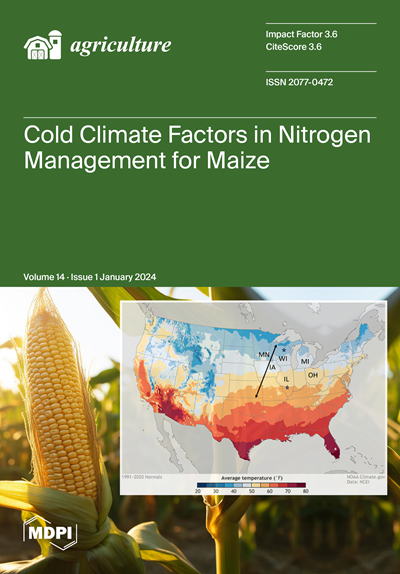四轮独立驱动电动拖拉机差速转向动力学控制研究
IF 3.6
2区 农林科学
Q1 AGRONOMY
引用次数: 0
摘要
传统拖拉机只能通过转向节、转向梯形等机械结构来实现转向。其中,机械结构较为复杂,各部件容易损坏,使拖拉机出现故障。四轮独立驱动差速转向方式不同于传统的阿克曼转向方式,通过控制内外轮转矩实现转向,能够准确转向高端农机设备的工作状态,提高农机设备的运行效率。针对电动拖拉机四轮独立驱动转向系统中的动态控制问题,提出了一种基于上一级偏航转矩滑模控制和下一级基于车辆轮胎平均载重率的最优转矩分配水平的分层控制策略。通过对四轮独立驱动差动转向机理的分析,建立了电动拖拉机差动转向动力学模型,并根据分层控制策略设计了四轮独立驱动的动态控制器。上控制器在滑模控制的基础上对期望偏航速度进行跟踪控制,跟踪驾驶员意图,下控制器根据车辆轮胎最优平均负载量原则实现最优转矩分配,保证电动拖拉机转向稳定性。对该控制器在双线移位、蛇形和阶跃等典型工况下的控制效果进行了仿真分析。结果表明,滑模控制器在驾驶员意图跟踪方面优于PID控制器。与平均分配策略相比,三种工况下车辆轮胎的平均最大载重率分别降低了16.9%、13.8%和17.3%,证明了分层控制策略的有效性。在实车测试中,滑模控制器在驾驶员意图跟踪方面优于PID控制器。该研究对提高电动拖拉机的机动性和稳定性具有重要的指导意义。本文章由计算机程序翻译,如有差异,请以英文原文为准。
Research on Differential Steering Dynamics Control of Four-Wheel Independent Drive Electric Tractor
Traditional tractors can only achieve steering through mechanical structures such as steering knuckles and steering trapezoids. Among them, the mechanical structure is more complex, and various parts are easily damaged, making the tractor malfunction. The four-wheel independent drive differential steering mode differs from the traditional Ackermann steering mode, which realizes steering by controlling the inner and outer wheel torque, which can accurately steer the working state of high-end agricultural machinery equipment and improve the operating efficiency of agricultural machinery equipment. Aiming at the dynamic control problem in the steering of electric tractor four-wheel independent drive, a layered control strategy based on the sliding mode control of yaw torque at the upper level and the optimal torque distribution level based on the mean load rate of vehicle tires at the lower was proposed. By analyzing the differential steering mechanism of a four-wheel independent drive, a dynamic model of differential steering of the electric tractor is established, and a dynamic controller of a four-wheel independent drive is designed according to the layered control strategy. The upper controller tracks and controls the expected yaw speed on the basis of the sliding mode control to track the driver’s intention, and the lower controller realizes the optimal torque distribution based on the principle of the optimal average load rate of the vehicle tire to ensure the steering stability of the electric tractor. The effect of the controller was simulated and analyzed under typical conditions of double line shift, serpentine, and step. The results showed that the sliding mode controller is better than the PID controller in driver intention tracking. Compared with the average allocation strategy, the average maximum load rate of the vehicle tire under the three working conditions is reduced by 16.9%, 13.8%, and 17.3%, respectively, which proves the effectiveness of the layered control strategy. In the real car test, the sliding mode controller is better than the PID controller in the driver intention tracking. This study has important guiding significance for improving the maneuverability and stability of electric tractors.
求助全文
通过发布文献求助,成功后即可免费获取论文全文。
去求助
来源期刊

Agriculture-Basel
Agricultural and Biological Sciences-Food Science
CiteScore
4.90
自引率
13.90%
发文量
1793
审稿时长
11 weeks
期刊介绍:
Agriculture (ISSN 2077-0472) is an international and cross-disciplinary scholarly and scientific open access journal on the science of cultivating the soil, growing, harvesting crops, and raising livestock. We will aim to look at production, processing, marketing and use of foods, fibers, plants and animals. The journal Agriculturewill publish reviews, regular research papers, communications and short notes, and there is no restriction on the length of the papers. Our aim is to encourage scientists to publish their experimental and theoretical research in as much detail as possible. Full experimental and/or methodical details must be provided for research articles.
 求助内容:
求助内容: 应助结果提醒方式:
应助结果提醒方式:


